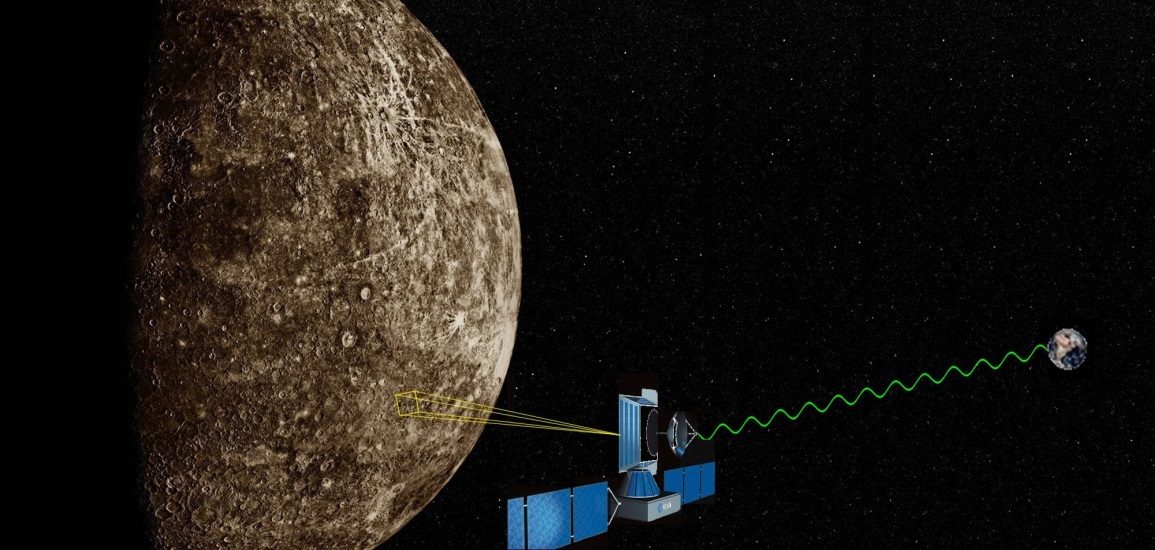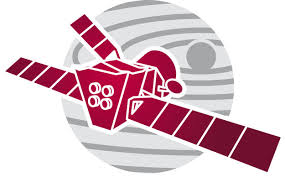MORE - BepiColombo
MORE
mercury orbiter radio-science experiment

science goals
MORE addresses BepiColombo's scientific goals in geodesy, geophysics and fundamental physics. It will help to determine the gravity field of Mercury as well as the size and physical state of its core. It will provide crucial experimental constraints to models of the planet's internal structure and test theories of gravity with unprecedented accuracy. It will also measure the gravitational oblateness of the Sun and test and characterize the most advanced interplanetary tracking system ever built. Finally, it will assess the performances of the novel tracking system in precise orbit determination and space navigation.
These scientific goals will be achieved by means of several data types, generated by MORE itself at the ground station, other on-board instruments (BELA, ISA, and SIMBIO-SYS) and the on-board attitude determination and control system. Auxiliary data sets are needed for instrument calibration. The key instrument is an advanced Ka-band transponder (KaT) which ensures the on-board reception of a Ka-band radio signal and its coherent retransmission to Earth. This instrument does not produce any telemetry, as the measurements are actually carried out by the ground station.
measurement principle
The basic observables produced by MORE are range with an accuracy of 15 cm and range rate of 1.5 microns/s at 1000s integration time, exploiting the microwave radio links to and from the spacecraft. The range rate is measured from the Doppler shift of an electromagnetic wave transmitted from ground, received by the spacecraft and coherently retransmitted back to ground. The spacecraft range is obtained from the measurement of the time delay between transmission and reception of a known modulation of the carrier. Ancillary ground instrumentation is needed at the ground station to provide wet and dry tropospheric calibration.
These data will be combined with the measurements of the vectorial non-gravitational acceleration by the BepiColombo Radio Science Accelerometer ISA to generate an orbital solution and the estimate of the physical parameters of interest. The SIMBIO-SYS high resolution images will be used for the optical tracking of surface landmarks in order to determine the rotational state of the planet. All radiometric measurements must be carried out in a coherent two-way mode, using highly stable frequency standards, such as hydrogen masers, for the generation and down conversion of the carrier at the ground station. Loss or degradation of the carrier phase coherence must be avoided on-board and at the ground station. The signal transmitted by the ground station starting from and H-maser is received by the two on-board transponders (Deep Space Transponder DST and KaT) and retransmitted coherently to the ground station. The downlink signal is then suitably down-converted and sampled both in open- and closed loop.
The goal of the BepiColombo rotation experiment is the determination of Mercury's obliquity (i.e. the obliquity of the equator with respect to the orbital plane) and the amplitude of its 88-day physical librations in longitude. These two quantities, together with the coefficients of the second degree harmonics of the gravity field, will indicate whether or not Mercury has a molten core and provide the radius of this molten core. The estimate of Mercury's polar axis direction (obliquity) and librations amplitude is based on multiple observations of landmarks on its surface by the SIMBIO-SYS cameras. Albedo features will be used as landmarks.
After the observation, images are referenced to an inertial frame (for example by providing the coordinates of the frame centre) and correlated to find the displacement of a landmark in this inertial frame. The polar axis direction is determined first (as it is insensitive to librations in longitude); the amplitude of the physical librations in longitude is then determined in a second and final step.
LINK TO SCIENCE DATASETS - COMING SOON
LINK TO USER MANUAL

